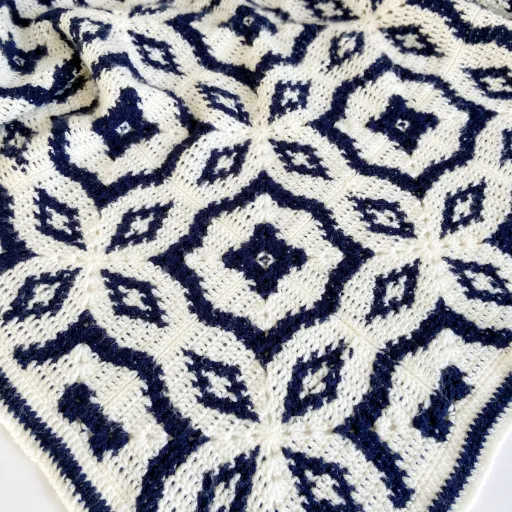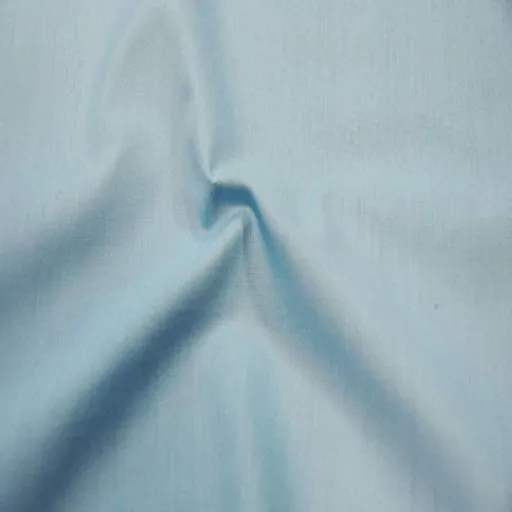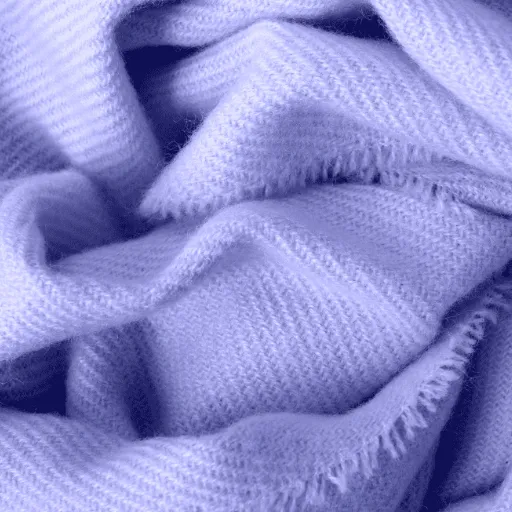Polyester is one of the most common fabrics used nowadays, found in practically everything. The main question usually asked about polyester is: Is it stretchy? Does it yield to whatever you do with it? Does it adapt to different uses or styles, or is it rigid and almost unforgiving? Whatever you plan to use — activewear, home textiles, or fashion staples — polyester performance is essential in making an informed decision. This guide provides a scientific description and characteristics of polyester, shedding light on a very pressing question: Does polyester stretch? You will learn along the way why manufacturers like it so much, the factors that affect its stretch, and comparisons with other fabric options. By the end of this article, you will be an informed guide in making choices about polyester materials and understanding how to care for them.
Understanding Polyester
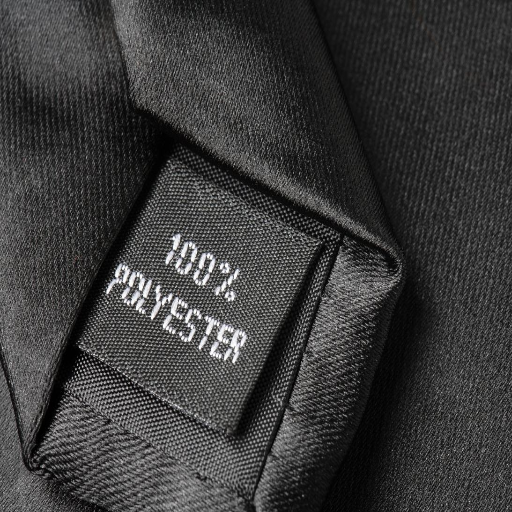
Polyester is an artificial fiber made from petroleum. However, it remains widely utilized in textiles for its durability and resistance to shrinkage and wrinkling. Polyester does not inherently have enough stretch; however, it can be made to stretch by being blended with an elastic fiber, such as spandex, or when properly woven. It can also exhibit great flexibility, depending on its production and treatment, making it suitable for eventual applications in sporting goods and upholstery.
Definition and Composition of Polyester Fabric
The polyester fabric is a synthetic material produced from petrochemicals, such as ethylene, derived from petroleum. Its structure is that of long-chain polymers known as polyesters, which are formed in a chemical reaction between an acid and an alcohol. The fabric is designed to possess properties such as good strength, water-repellent properties, and lightness; hence, it is utilized in various industrial sectors, including apparel, furnishing, and industrial applications. Modern machining advancements have enabled the hybridization of polyester with natural fibers or other synthetics to enhance its breathability, feel, and performance. This versatility has since transformed it into a staple in both fashion and practicality worldwide.
Key Properties: Why Polyester is a Versatile Fabric
Polyester is versatile due to its noted properties, which make it a beneficial fabric in all industries. Its durability ensures resistance to wear-and-tear effects, thereby making it a very appropriate fabrication for long life. It is highly resistant to stretching or shrinking processes; that is, it retains its shape, even after repeated washes. It is also lightweight and comfortable when worn, and it is easy to carry. It also repels water and dries quickly, providing sufficient reasons for sportswear and outdoor gear applications to research its development. The treatment of the fiber to achieve a greater degree of comfort and breathability is another recent innovation by mixing polyester with natural fibers. The characteristic properties, combined with affordability and ease of production, have kept polyester in the race of the most preferred synthetic fabrics globally.
Different Types of Polyester and Their Uses
Here’s a table summarizing the different types of polyester, their uses, and whether they stretch, based on the latest information:
| Type of Polyester | Key Properties | Common Uses | Does It Stretch? |
|---|---|---|---|
| PET (Polyethylene Terephthalate) | Durable, lightweight, moisture-resistant | Clothing, bottles, packaging | Minimal stretch |
| PCDT (Poly-1,4-Cyclohexylene Dimethylene Terephthalate) | Stronger, more elastic than PET | Upholstery, heavy-duty textiles | Slight stretch |
| Recycled Polyester (rPET) | Eco-friendly, durable | Sustainable fashion, home textiles | Minimal stretch |
| Polyester-Spandex Blend | Highly elastic, flexible | Activewear, leggings, sportswear | High stretch |
| Microfiber Polyester | Soft, lightweight, moisture-wicking | Sportswear, cleaning cloths | Minimal stretch |
Polyester Stretch: The Facts
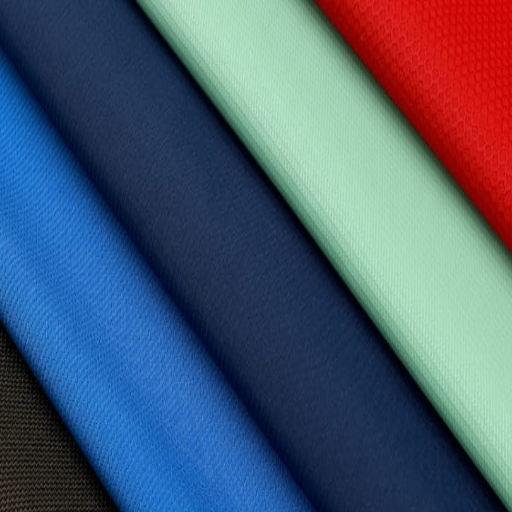
Key Insight: The stretch of polyester will depend on the blend and construction. Pure polyester is considered to have the least measure of stretch and can be regarded as impermeable to stretch. The blend with other fibers, such as spandex, however, can impart high elasticity to the fabric, suitable for activewear and sportswear applications. Additionally, some polyester-type weaves may be designed to prioritize softness and lightweight properties while allowing minimal stretch, such as those found in microfiber. In essence, stretch depends significantly on the composition of the polyester fabric and its ultimate use.
Natural Stretchability of Polyester Yarn
Polyester yarn is highly nonstretchable by its very nature, since it is a synthetic fiber and does not have the properties that natural fibers possess for purposes of stretch, such as wool or rubber. On the other hand, modern textile engineering and blending have given it particular usages. When mixed with spandex or treated accordingly, polyester yarn becomes more stretchy, allowing it to compete in various applications, ranging from fashion to performance fabrics. These advancements also meet the increasing demands of the industry for hard-wearing yet flexible textile solutions.
Polyester Blends: Enhancing Stretch and Comfort
Polyester blends enjoy growing popularity because they allow durability to be combined with comfort and flexibility. When blended with cotton, spandex, or viscose, polyester achieves a softer touch and slightly improved breathability, meeting modern-day demands: one needs performance with style. “Why are polyester blends great for activewear?” One must first remember that they are moisture-wicking, stretchy, and resilient —all qualities that keep an active person comfortable while ensuring the activewear lasts through many washes and wears. To such an extent that polyester blends are likely to remain favored by designers and manufacturers who aim to create functional clothing for diverse lifestyles.
External Factors Affecting Polyester Stretch
External factors can influence the stretchability of polyester. Temperature is one of the key attributes because prolonged exposure to heat compromises the structural integrity of fibers, thereby reducing their elasticity over time. Moisture levels could also be affecting the stretchability; since polyester is essentially hydrophobic, prolonged exposure to water or humidity may cause mild degradation of the fibers. However, chemical agents such as soaps, detergents, or bleaches—if used harshly or incorrectly—may interfere with the capacity of polyester to stretch and return to its original form. Repeated mechanical stresses applied to polyester fibers, such as continually pulling or stretching, can, over time, erode their elasticity. A good understanding of these factors will help one preserve polyester garments for a longer time with optimal performance.
Benefits of Polyester Fabric
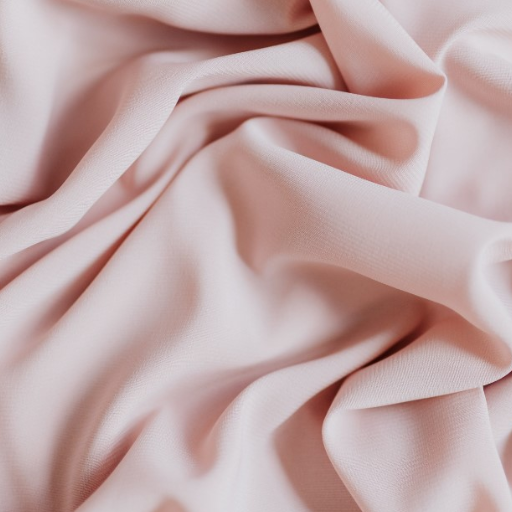
With several benefits to offer, polyester fabric has become one of the most commonly used textiles in the industry:
- ●
Durability: Polyester resists stretching, shrinking, and abrasions; hence, after repeated events of wear, the garments made from it still hold their shape. - ●
Moisture Resistance: The fabric quickly dries and does not absorb water, making it a popular choice for active wear and outdoor clothing. - ●
Lightweight and Strong: Despite being lightweight, polyester creates a strong fabric that will stand the test of time. - ●
Wrinkle Resistance: Polyester fabric naturally resists wrinkles, making it less prone to wrinkling and more convenient for daily wear. - ●
Easy Maintenance: Machine-washable, retains its color well, and is unlikely to fade with age.
Together, these characteristics have made it the most versatile and attractive for application in numerous fields.
Durability and Resistance to Wear
Polyester’s strength and resistance to wear stem from its synthetic structure, which provides an outstanding balance of strength and flexibility. As this fiber does not often shrink, stretch, or tear, unlike natural fibers, it is highly sought after for applications such as outdoor gear, sportswear, and upholstery that demand the utmost durability. Its lay-in resistance and prolonged resistance to use help maintain the shape and performance of polyester, meaning it can continue to do its job for the user after multiple washes or exposure to various environmental conditions. Attributes such as these have kept polyester standing firm as a highly dependable fabric for consumer and industrial use.
Moisture-Wicking Properties: Polyester Apparel
With polyester, the moisture-wicking property makes the fabric a popular choice for active wear and performance-based apparel. The fabric is designed to allow moisture to exit the skin surface and settle on the outer panel, where it evaporates quickly. Recent scientific evidence suggests that polyester track garments excel at keeping dry and comfortable during physical activity, thereby reducing the discomfort caused by sweat accumulation. Search trends data reveal that users frequently query “breathable fabrics” and “moisture-wicking clothing”, indicating that additives to polyester are being recognized by the general public and driving demand for their implementation in contemporary apparel. This being the case, by fulfilling performance needs, polyester thus forms a natural compromise in utility for both the athlete and the casual consumer.
Versatility: Uses in Different Industries
Polyester’s versatility extends into various industries, making it a good key material. Recent search data points to the increase in interest around “polyester in industrial applications” and “polyester home products”; this indicates a growing acknowledgment of polyester’s versatility. It is favored for home furnishings, such as curtains, upholstery, and bedding, due to its durability and wrinkle resistance. In an advertising setting, seat belts, interiors, and airbags convey strength and reliability. Additionally, polyester’s rain-repellent properties make it suitable for outdoor apparel and technical equipment. With this increase in search activity, it may be assumed that companies and consumers alike are more interested in and value the cross-industrial applications of polyester.
Comparing Polyester with Natural Fabrics
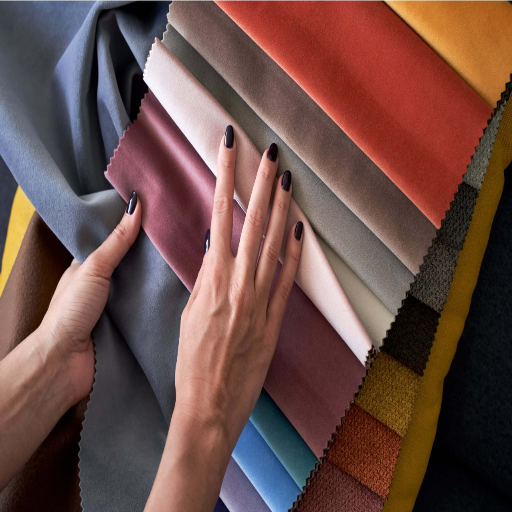
Durability and Longevity
Compared to cotton or wool, polyester is generally a more durable and long-lasting fabric. This fabric resists stretching, shrinking, and abrasions; so it is the best choice for everyday use and high-performance applications, while natural fabrics may wear out in time.
Maintenance
Polyester tends to be simple in terms of maintenance, as it resists wrinkles and dirt, and requires minimal ironing or special care. Natural fabrics are typically washed more gently, but they are also more prone to wrinkling or staining.
Comfort and Breathability
Natural fabrics, such as cotton and linen, offer breathability and softness, while polyester can sometimes feel uncomfortable for some due to its synthetic character. With new advances in textile engineering, many polyester blends are now considered breathable and moisture-wicking.
Environmental Impact
Natural and biodegradable fabrics are often considered environmentally friendly when obtained from sustainable sources, although they conversely require resources such as water and land for production. Polyester, although recycled, is derived from petroleum and contributes to the origin of microplastic pollution.
Polyester vs. Cotton: Which is More Stretchy?
Polyester is a more stretchable fiber, primarily due to its synthetic nature. Polyester fibers, due to their elastic and resilient nature, can create fabrics that stretch and then recover to their original shape with minimal deformation. This property thus makes polyester suitable for active wear and garments that require some level of flexibility. On the other hand, cotton does not possess the property of elasticity. Therefore it would not stretch unless it is blended with other stretch materials, such as spandex, or used in a particular way, such as in knit fabrics. So, if someone aspires for a fabric that stretches more and withstands wear, then polyester is the way to go.
Feel and Comfort: How Does Polyester Fabric Compare?
Polyester fabric is smooth and lightweight, making it suitable for a variety of garments. Although not as soft as natural fibers like cotton, the textile industry has improved the comfort of polyester in recent years. Current polyester blends attempt to replicate the softness of natural fabrics while maintaining polyester’s moisture-wicking and fast-drying properties. Polyester feels comfortable against the skin, and its smooth texture may prevent chafing or irritation even during prolonged wear. Natural fibers could still be a more comfortable option for those with sensitive skin.
Sustainability and Environmental Considerations
When considering the sustainability of polyester, it is inadequate to assess its profile without referring to some of the environmental problems it poses, as well as a few of its benefits. Technological developments in recycling have given rise to recycled polyester, made usually from discarded plastic bottles, which recycles waste and reduces demand for virgin polyester derived from non-renewable fossil fuels. Polyester is also very durable, one of the factors considered in promoting the better longevity of garments, which are often unfavorably made from other fiber types, and thus potentially reducing the rate of replacement and consumption.
However, polyester faces environmental concerns. It requires the highest level of energy consumption possible, emitting greenhouse gases into our atmosphere, thus altering our climate. Additionally, washing any polyester fabric releases microplastics, fragments of plastics, into our waterways, threatening the very existence of marine life there. Consumers can, therefore, ensure that they purchase garments made from recycled polyester, wash synthetic fiber clothing less frequently, and continue to search for new biodegradable synthetic materials to replace traditional ones. These approaches, along with wise choices, may be advantageous in striking a balance between usefulness and environmental considerations with polyester.
Practical Tips for Working with Polyester
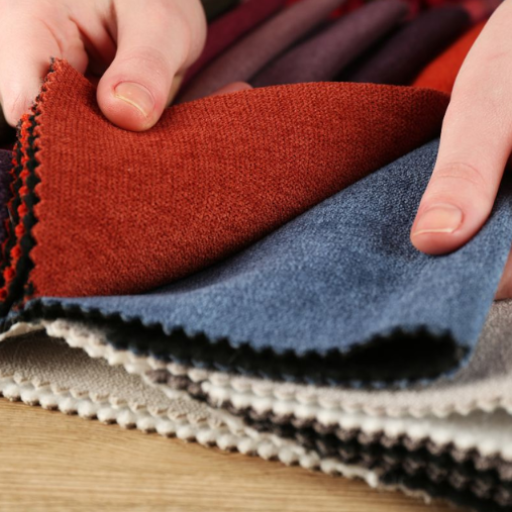
- 🧺
Washing: Use cold water and the delicate cycle to prolong the life of polyester goods and prevent fiber shedding. A mesh laundry bag is best for holding microplastic release. - 🌬️
Drying: When possible, hang to dry to avoid shrinking or heat damage to polyester items. If using the dryer, select a gentle, low heat setting. - 🔥
Ironing: Polyester will melt if exposed to high heat; avoid this by either using a low setting or setting a cloth over the garment while ironing. - 📦
Storage: A cool, dry place is ideal for keeping polyester clothing to prevent unwanted wrinkles and to maintain the integrity of the fabric. - 🧽
Stain Removal: Use a mild detergent to treat stains as soon as possible. Avoid using bleach, as it can weaken or discolor the fabric.
How to Properly Care for Polyester Fabric
Polyester fabric receives the best care when washed in cold or warm water on a gentle cycle with a mild detergent. It should never feel the harshness of excessive heat, so the tumble dryer must be set to low moisture, or let it air-dry. It gets ironed only on a low setting and with a cloth on top to help protect the fabric. Polyester clothing is stored in a cool, dry place to avoid wrinkles. Carpet spots are treated immediately with a mild detergent, and never with bleach, to preserve the fabric’s quality.
Choosing the Right Polyester Blend for Your Needs
When selecting the ideal polyester blend for your needs, consider factors such as durability, comfort, and the product’s intended use. A polyester and cotton blend is commonly known as poly-cotton due to the balance the fabric holds between softness and resilience, thus making it suitable for everyday use or uniforms. A polyester-spandex blend, due to its stretch and hugging qualities, is particularly well-suited for activewear. For glamorous uses such as upholstery or evening wear, polyester-silk blends are smooth and shiny. Consider how the fabric will be used and give preference to blends that suit your lifestyle and taste, taking into account the fabric’s ability to withstand the test of time.
Creative Uses: Print on Polyester and Beyond
Polyester printing has become a glittering tapestry of possibilities for artists and entrepreneurs alike. With the advancement of printing technology, sublimation printing has gained increasing preference for polyester fabric, offering vibrant and lasting designs that resist fading or cracking over time. The dye is transferred into the fibers themselves with heat, providing lovely, full-color patterns that can be used on a wide range of products, from custom apparel and banners to home décor items.
Then came polyester printing for personalized furniture covers, promotionals, including totes and lanyards, and even art installations. The durability and versatility of polyester make it a popular choice to create out-of-the-ordinary pieces. Polyester printing, with its endless designs and versatile applications, continues to captivate every phase of the creative production process.
Reference Sources
Here are the five professional and informative references for verifying the truthfulness of the article on “Does Polyester Stretch.”
- PubMed Central – Changes in Mechanical Properties of Fabrics Made with Polyester and Elastane
Description: The research explains the differences between polyester and polyester-spandex mixes by studying their fabric elongation and breaking exercises. - SpringerOpen – Structural Effect of Polyester SCY Knitted Fabric on Fabric Size and Stretch Properties
Description: The research we focus on is the stretch properties of polyester fabrics and their application in high-stretch compression products. - ResearchGate – Elastic Polyester
Description: An in-depth report of the elasticity of the polyester and plastic industry domination, with a focus on structural and mechanical properties. - ResearchGate – Structural Effect of Polyester SCY Knitted Fabric on Stretch Properties
Description: The reported work desires to utilize the elastomechanical properties of MWCNTs-polyester composite fabrics in studying compression garment applications. - SAGE Journals – Mechanics of Elastic Performance of Textile Materials
Description: Thorough and complete research has been conducted to examine the elastic properties of textile materials like polyester, with emphasis laid on bridging the gap between twist and the modulus of elasticity on the yarn.
Frequently Asked Questions (FAQs)
Does polyester stretch well?
Polyester is known for its stretchiness, especially when blended with elastic fibers like spandex or elastane. This combination allows polyester garments to stretch and move comfortably, making it a popular choice for activewear and form-fitting clothing.
What is the stretchiness of polyester compared to other fabrics?
Polyester is generally more stretchy than cotton. While cotton is a natural fiber that has limited stretch, polyester can be engineered to have various levels of elasticity. This makes polyester a versatile fabric that can accommodate a wide range of design styles and body types.
What are the benefits of polyester fabrics?
Polyester is a synthetic fabric that offers several key advantages, including durability, resistance to wear and tear, and low maintenance. Polyester fabrics are less likely to shrink or wrinkle, making them an ideal choice for everyday clothing and outdoor apparel.
Can polyester be blended with other materials?
Yes, polyester can be blended with natural fibers, such as cotton or wool, to create polyester-blend fabrics. These blends can enhance the qualities of the fabric, providing both comfort and the durability of polyester.
What types of polyester fabrics exist?
There are various types of polyester fabrics, including knitted polyester and woven polyester. Knitted polyester is typically stretchy and soft, while woven polyester tends to be more structured. Each type offers unique benefits depending on the intended use.
How does washing affect polyester stretch?
Washing your polyester garments properly can help maintain their shape over time. It’s advisable to follow care instructions and avoid harsh fabric softeners that may affect the elasticity of polyester. Generally, polyester is resistant to shrinkage, which helps it retain its stretch.
Is polyester known for its durability?
Yes, polyester is well-known for its durability. It is a synthetic material that can withstand significant wear and tear, making it an ideal choice for clothing that requires durability. This quality also makes polyester a popular option for outdoor and performance apparel.
What does polyester feel like compared to natural fabrics?
Polyester typically has a smooth and slightly slick feel, which can differ from the softness of natural fabrics like cotton. However, when blended with natural fibers, polyester can provide a more comfortable feel while retaining its synthetic benefits.
Can you print on polyester?
Yes, polyester fabric is suitable for printing, making it a popular choice for custom apparel and designs. The unique qualities of polyester enable vibrant colors and patterns that can withstand washing and wear, thereby enhancing the aesthetic appeal of polyester garments.








